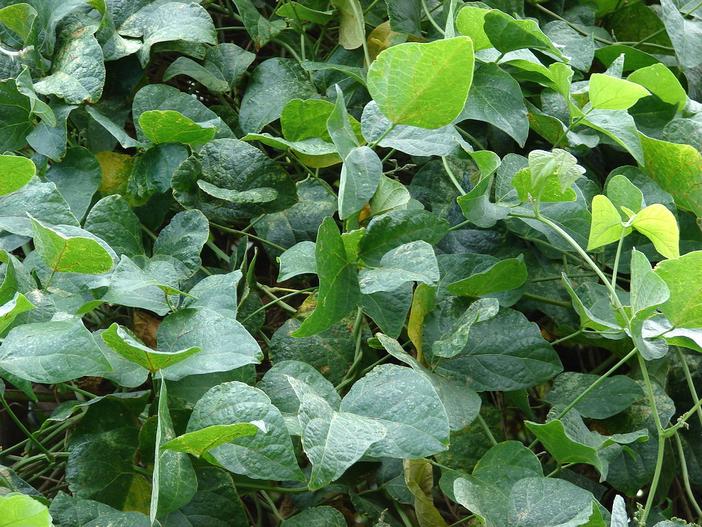Lima Bean
(Phaseolus lunatus)
Lima Bean (Phaseolus lunatus)
/
/

Forest and Kim Starr
CC BY 2.0
Image By:
Forest and Kim Starr
Recorded By:
Copyright:
CC BY 2.0
Copyright Notice:
Photo by: Forest and Kim Starr | License Type: CC BY 2.0 | License URL: https://creativecommons.org/licenses/by/2.0/ | Uploader: Starr Environmental | Publisher: Flickr


























Estimated Native Range
Summary
Phaseolus lunatus, commonly known as Lima Bean, is an annual vine or herbaceous plant native to tropical regions, including forests and savannahs in Mexico and Central America and South America. It is a legume cultivated for its edible seeds, which are a staple food in many cultures. Lima beans can be grown as bush or pole (vine) types, with pole cultivars reaching heights of 1 to 5 meters (3 ft 3 in to 16 ft 5 in). Bush types tend to mature earlier than pole varieties. The plant features pods up to 15 cm (5.9 in) long, containing mature seeds that are 1 to 3 cm (0.39 to 1.18 in) in size, oval to kidney-shaped, and typically flat, except in "potato" cultivars where they are more spherical. The above-ground parts of the plant die back in the dry season, with germination or budding in June or July, first inflorescences in October or November, and flower and fruit production ending between February and April. Baby lima beans are sown in early June and harvested approximately 10–12 weeks later.
Lima beans are valued for their high protein content and are a popular choice for home vegetable gardens and commercial agriculture. They require full sun and high amounts of water, thriving in soils with medium drainage. While they are generally easy to grow, they can be susceptible to fungal diseases, especially in humid conditions. In some regions, they can become invasive if not managed properly. Lima beans are also used as a cover crop to fix nitrogen in the soil, improving soil health for subsequent plantings.CC BY-SA 4.0
Lima beans are valued for their high protein content and are a popular choice for home vegetable gardens and commercial agriculture. They require full sun and high amounts of water, thriving in soils with medium drainage. While they are generally easy to grow, they can be susceptible to fungal diseases, especially in humid conditions. In some regions, they can become invasive if not managed properly. Lima beans are also used as a cover crop to fix nitrogen in the soil, improving soil health for subsequent plantings.CC BY-SA 4.0
Plant Description
- Plant Type: Vine, Herb
- Height: 4.5-16 feet
- Width: 6-15 feet
- Growth Rate: Rapid
- Flower Color: White, Purple
- Flowering Season: Summer, Fall
- Leaf Retention:
Growth Requirements
- Sun: Full Sun
- Water: High
- Drainage: Medium
Common Uses
Edible*Disclaimer: Easyscape's listed plant edibility is for informational use. Always verify the safety and proper identification of any plant before consumption.
Natural Habitat
native to tropical regions, including forests and savannahs in Mexico and Central America and South America
Other Names
Common Names: Sieva Bean, Kidney Bean, Sugar Bean, Java Bean, Butter Bean, Burma Bean, Rangoon Bean, Duffin Bean, Broad Bean, Butter Beans
Scientific Names: , Phaseolus limensis, Phaseolus lunatus, Phaseolus lunatus var. silvester, Phaseolus lunatus var. lunatus, Phaseolus inamoenus, Dolichos tonkinensis, Phaseolus derasus, Phaseolus lanatus, Phaseolus rufus
GBIF Accepted Name: Phaseolus lunatus L.